Abstract
Little is known about the nature of bacteria associated with the surface and gut of marine copepods, either in laboratory-reared animals or in the natural environment. Nor is it known whether such animals possess a gut flora. The present report deals with studies of microorganisms isolated from healthy, laboratory-reared copepods of the species Acartia tonsa Dana, from several species of wild copepods collected from a marine or estuarine environment, and from laboratory dishes containing moribund copepods. Evidence for a unique gut flora in laboratory-reared animals is presented; the predominant bacteria were represented by the genus Vibrio. Other organisms such as Pseudomonas and Cytophaga were found less abundantly associated with the copepods and not specifically associated with the gut.
Full text
PDF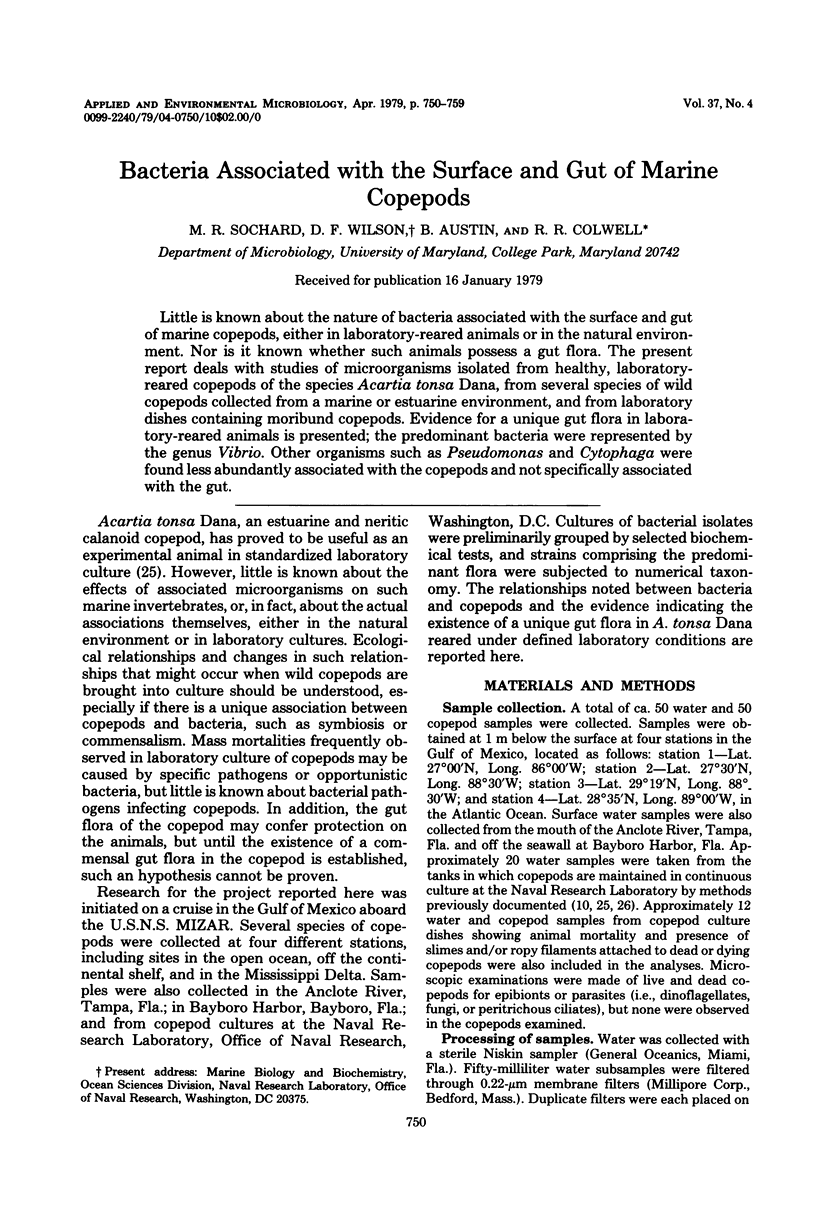
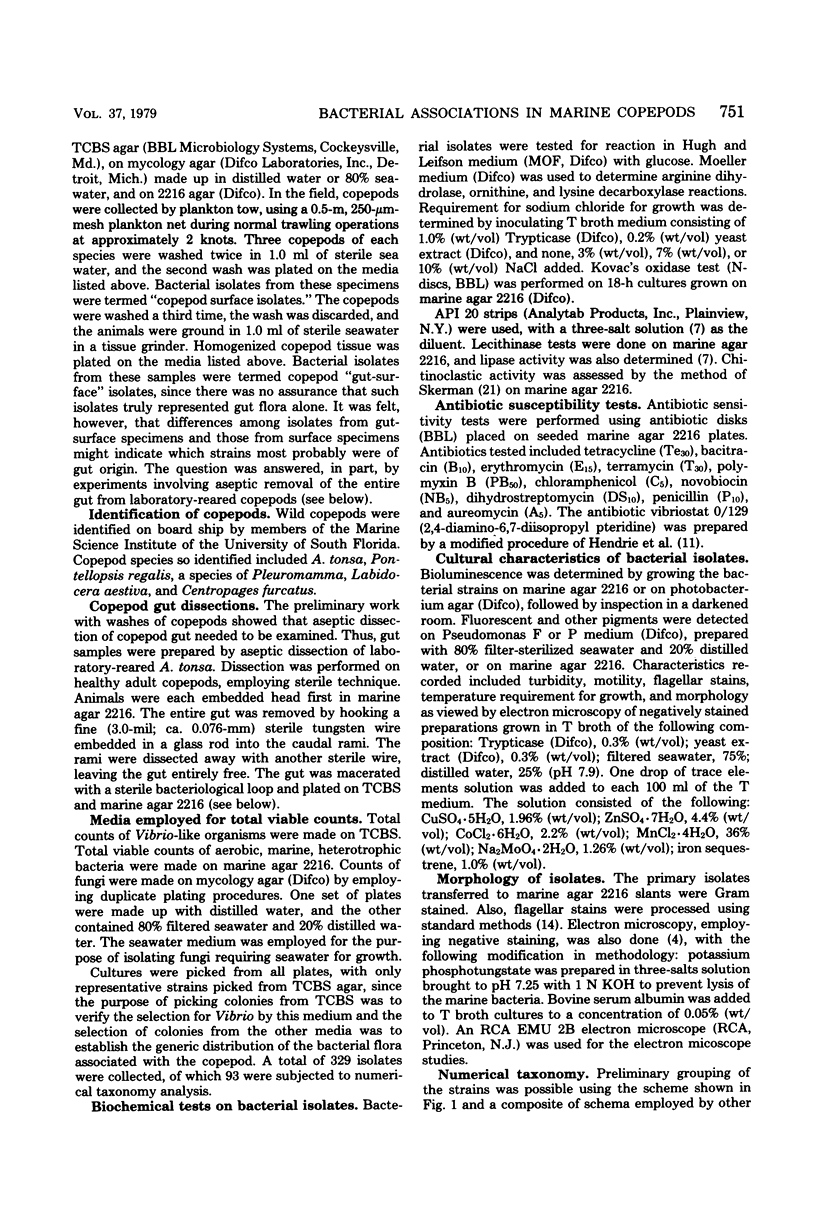
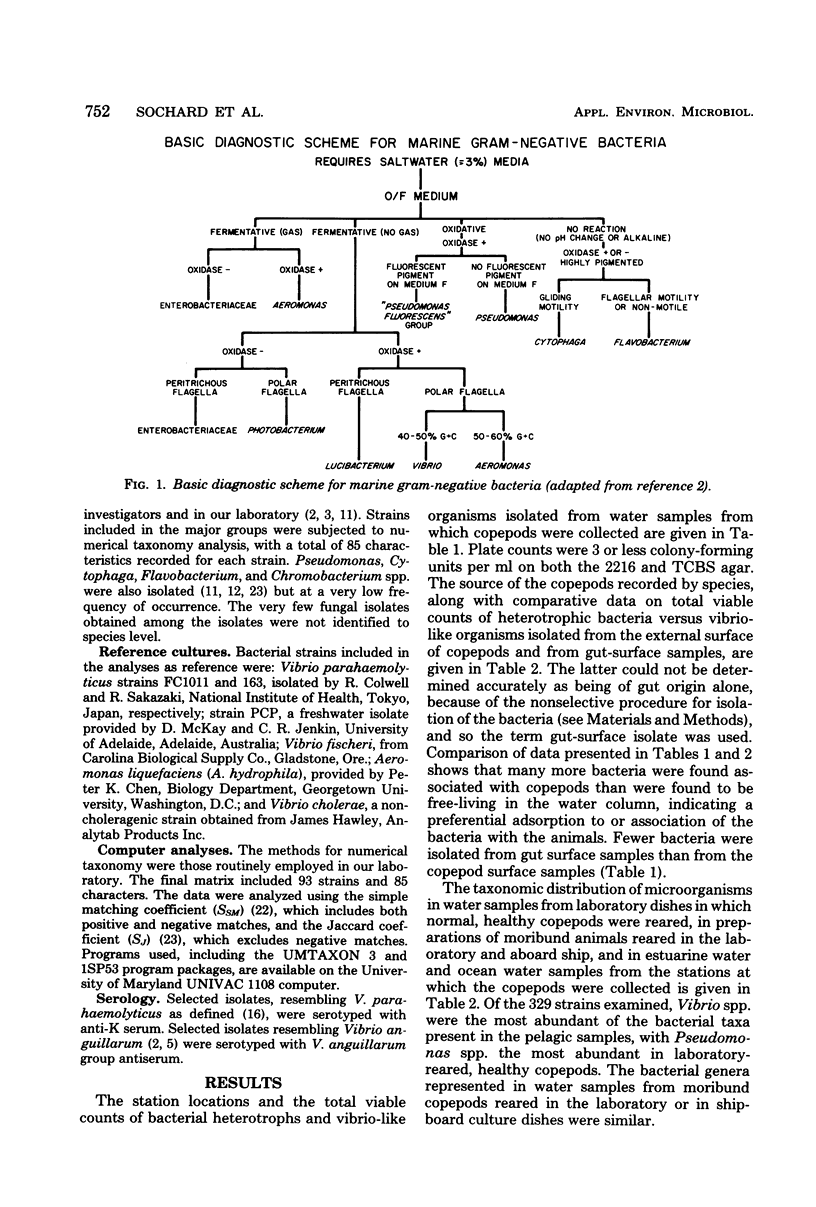
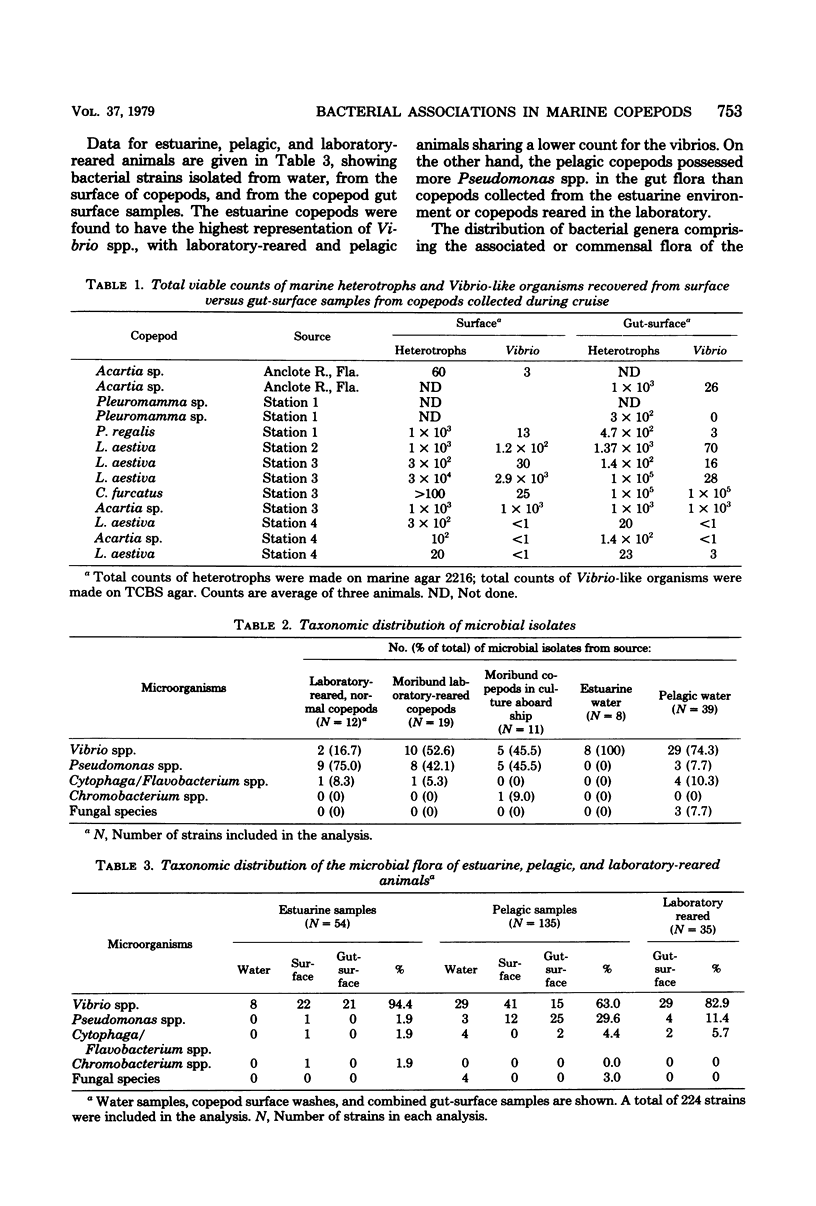
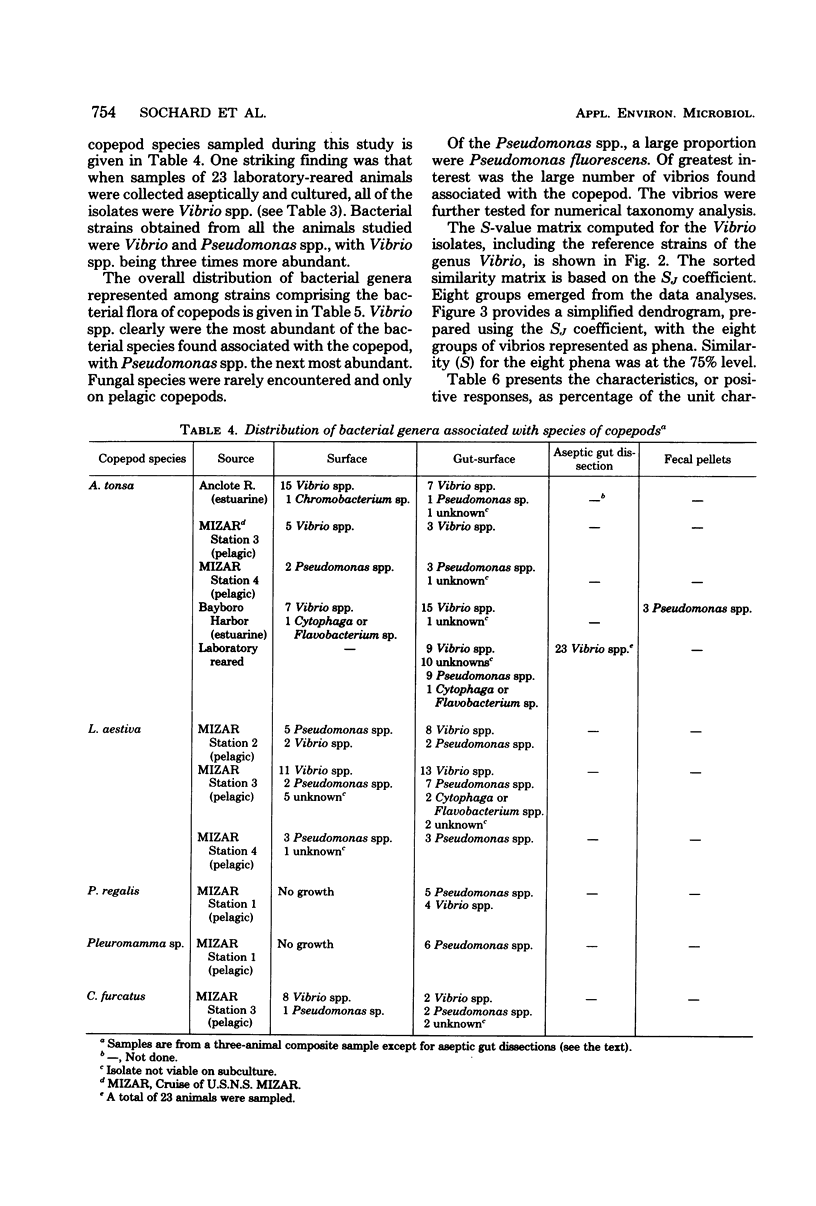
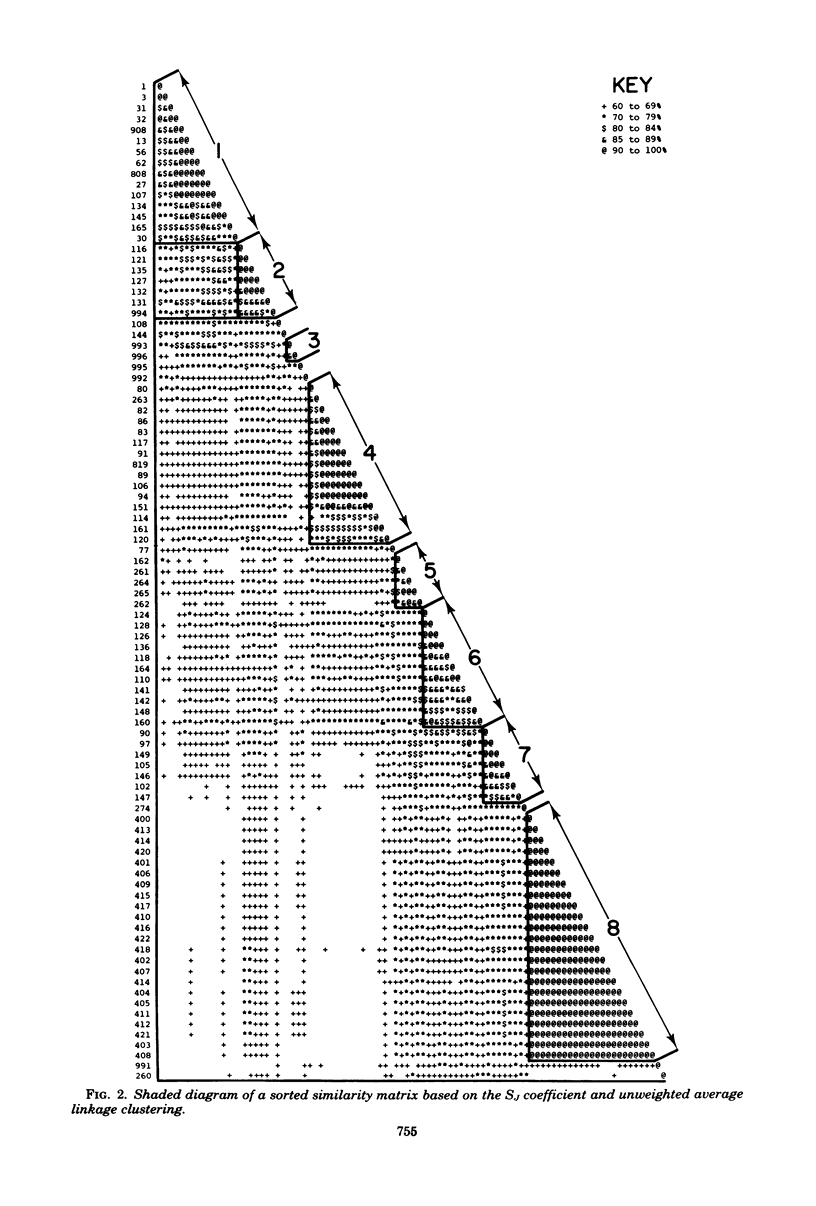
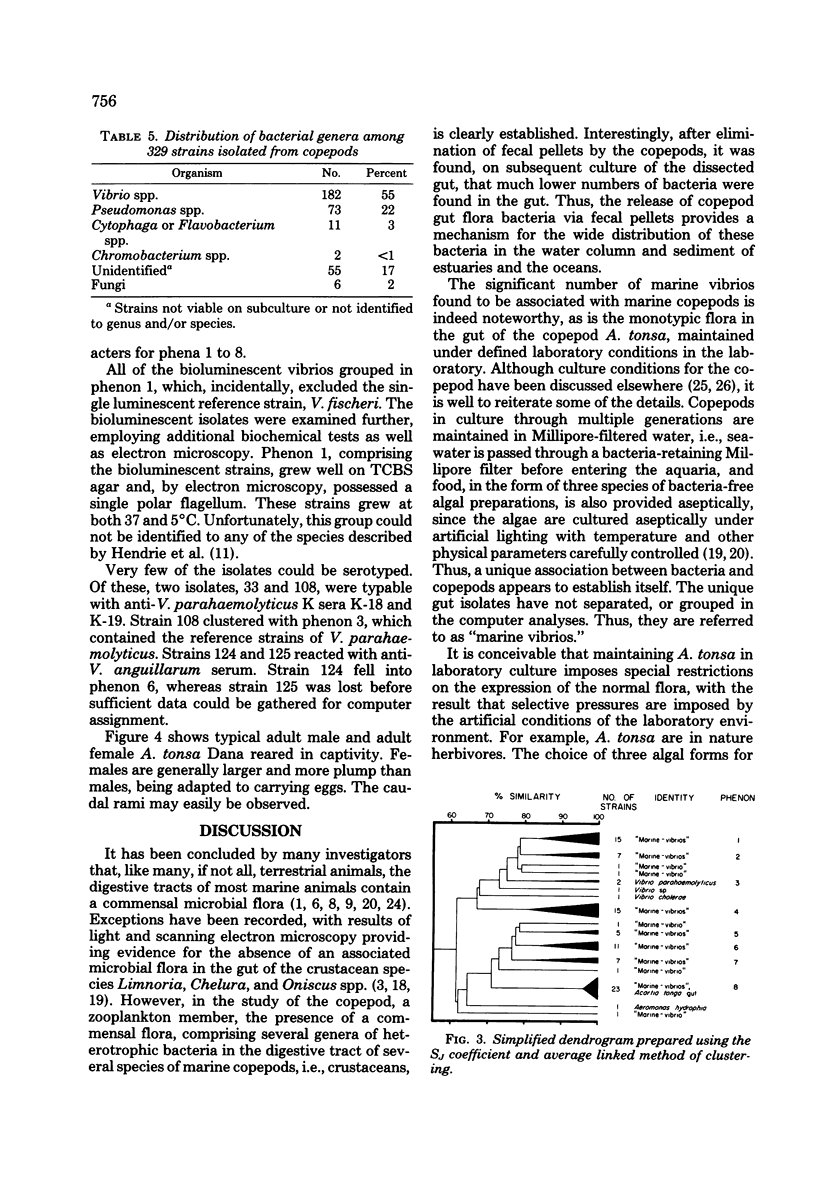
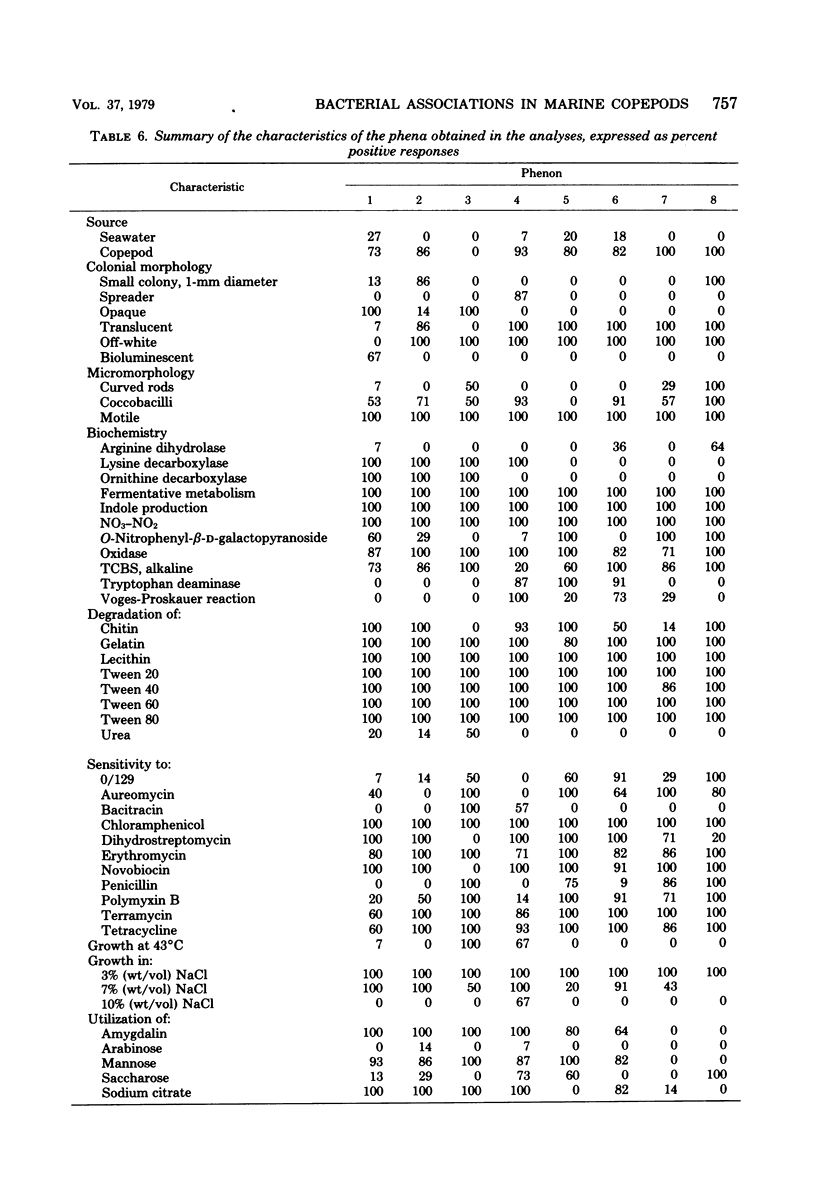
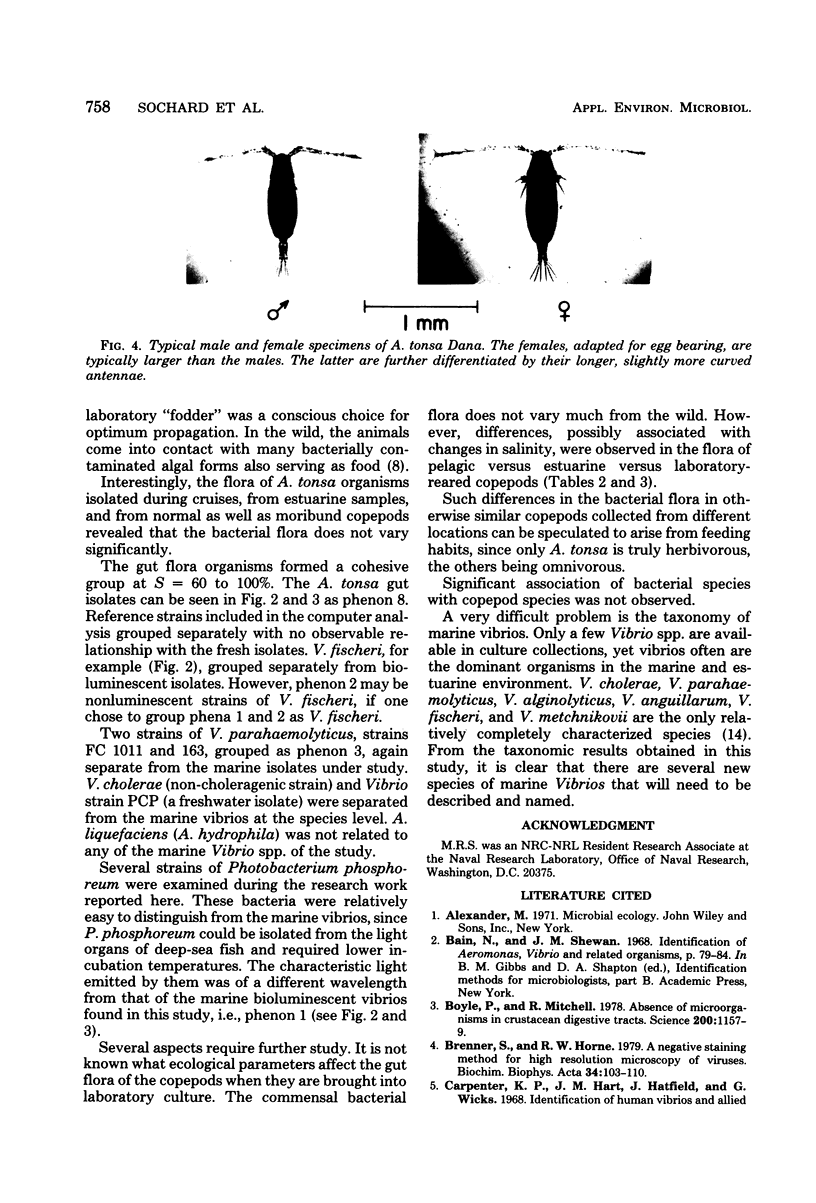
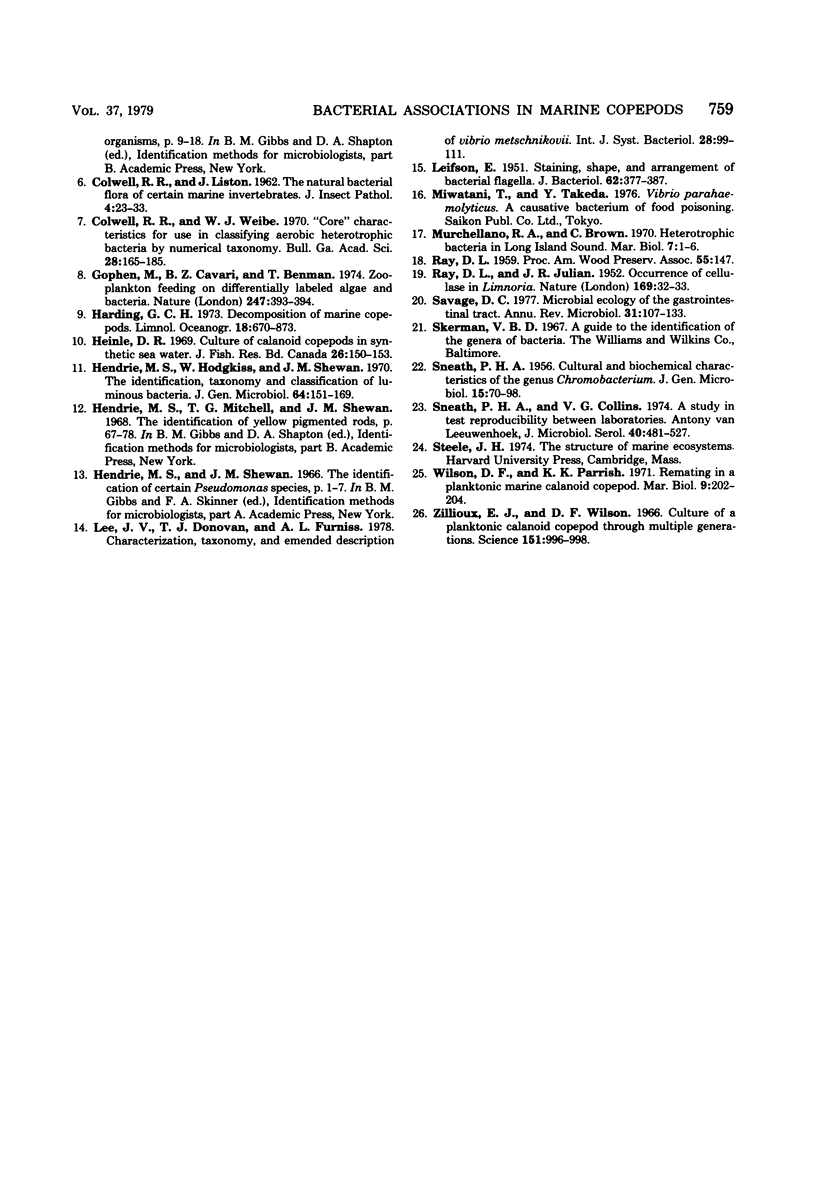
Images in this article
Selected References
These references are in PubMed. This may not be the complete list of references from this article.
- BRENNER S., HORNE R. W. A negative staining method for high resolution electron microscopy of viruses. Biochim Biophys Acta. 1959 Jul;34:103–110. doi: 10.1016/0006-3002(59)90237-9. [DOI] [PubMed] [Google Scholar]
- Boyle P. J., Mitchell R. Absence of microorganisms in crustacean digestive tracts. Science. 1978 Jun 9;200(4346):1157–1159. doi: 10.1126/science.200.4346.1157. [DOI] [PubMed] [Google Scholar]
- LEIFSON E. Staining, shape and arrangement of bacterial flagella. J Bacteriol. 1951 Oct;62(4):377–389. doi: 10.1128/jb.62.4.377-389.1951. [DOI] [PMC free article] [PubMed] [Google Scholar]
- RAY D. L., JULIAN J. R. Occurrence of cellulose in Limnoria. Nature. 1952 Jan 5;169(4288):32–33. doi: 10.1038/169032a0. [DOI] [PubMed] [Google Scholar]
- SNEATH P. H. Cultural and biochemical characteristics of the genus Chromobacterium. J Gen Microbiol. 1956 Aug;15(1):70–98. doi: 10.1099/00221287-15-1-70. [DOI] [PubMed] [Google Scholar]
- Savage D. C. Microbial ecology of the gastrointestinal tract. Annu Rev Microbiol. 1977;31:107–133. doi: 10.1146/annurev.mi.31.100177.000543. [DOI] [PubMed] [Google Scholar]
- Sneath P. H., Collins V. G. A study in test reproducibility between laboratories: report of a Pseudomonas Working Party. Antonie Van Leeuwenhoek. 1974;40(4):481–527. doi: 10.1007/BF00403815. [DOI] [PubMed] [Google Scholar]
- Zillioux E. J., Wilson D. F. Culture of a Planktonic Calanoid Copepod through Multiple Generations. Science. 1966 Feb 25;151(3713):996–998. doi: 10.1126/science.151.3713.996. [DOI] [PubMed] [Google Scholar]



